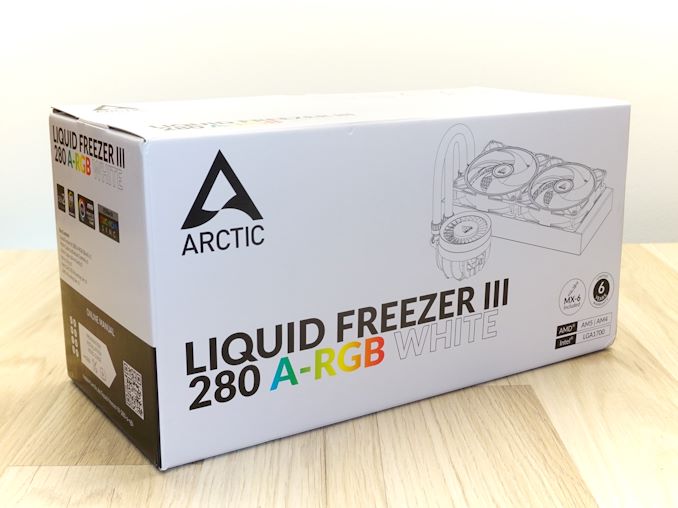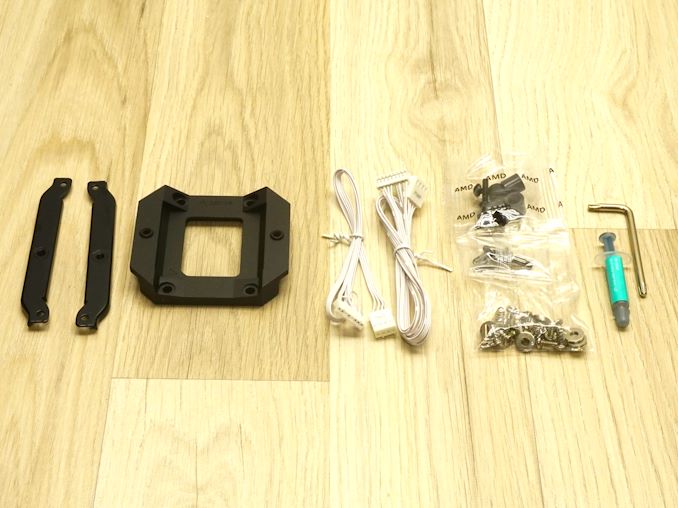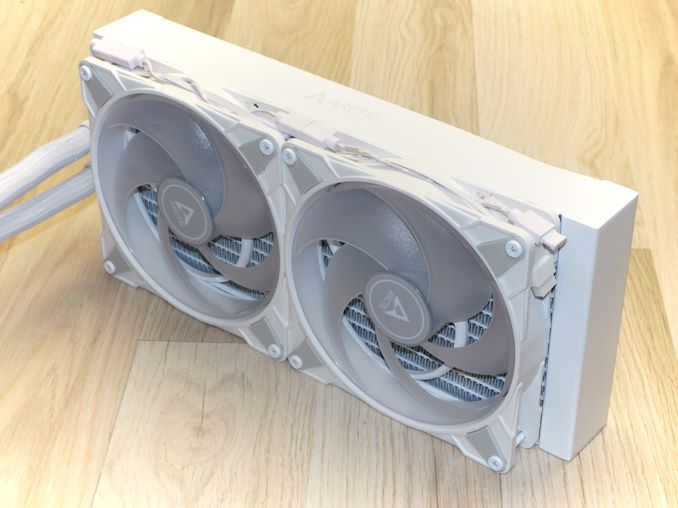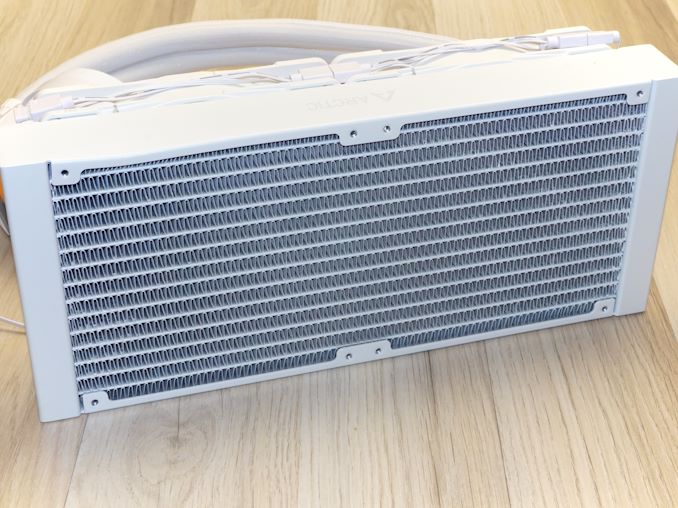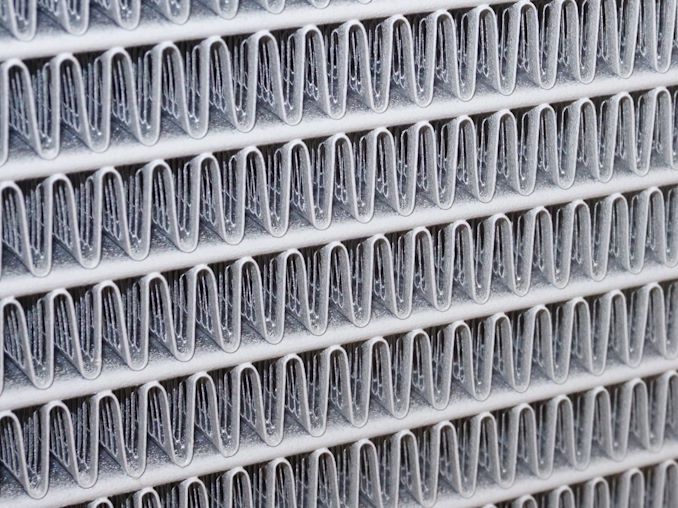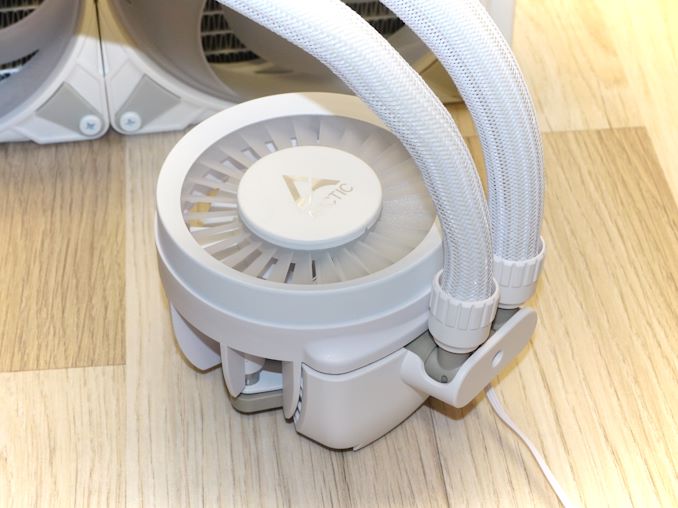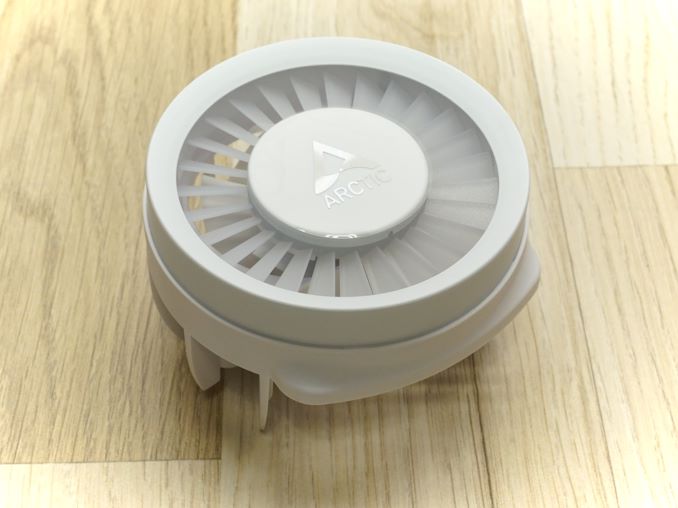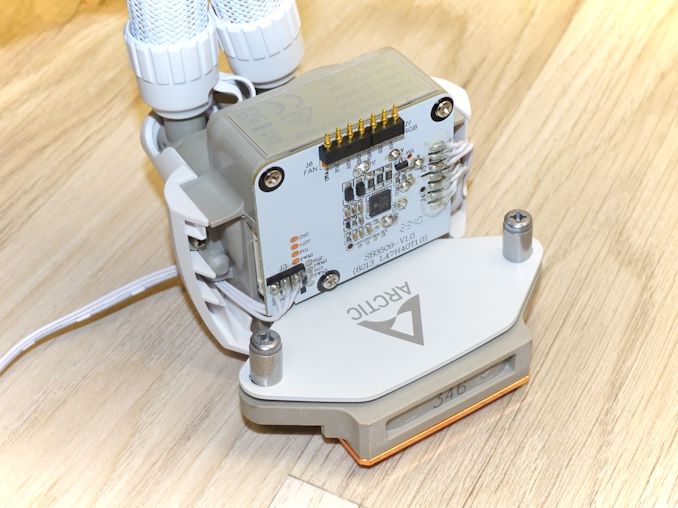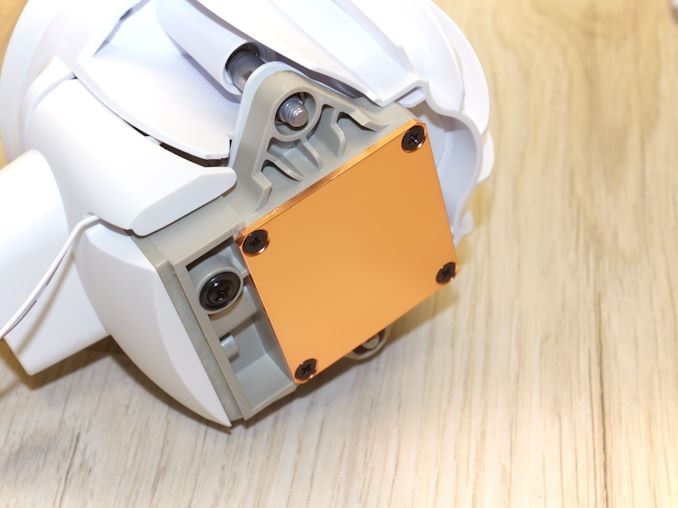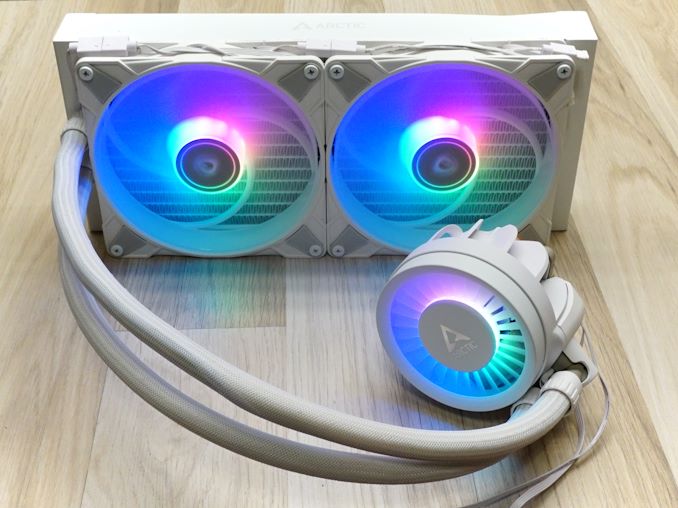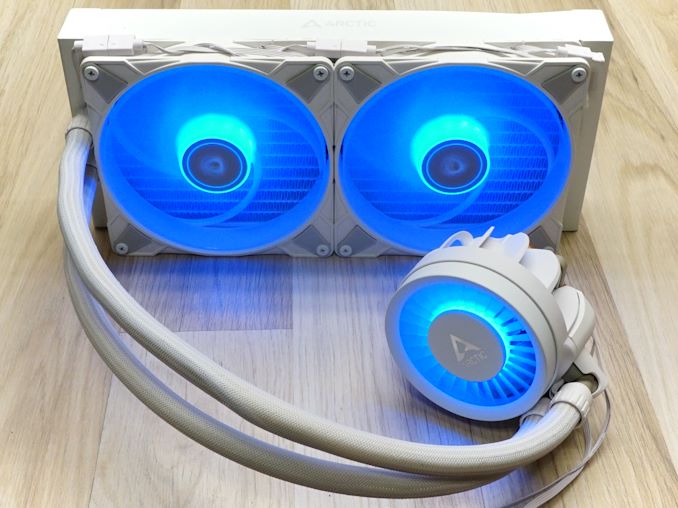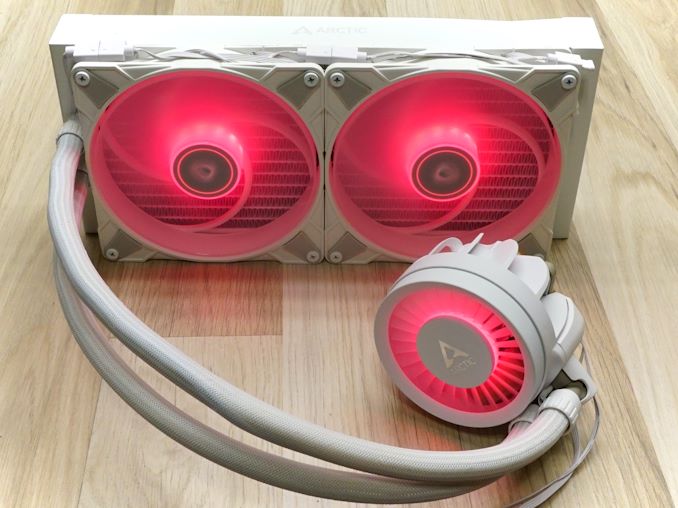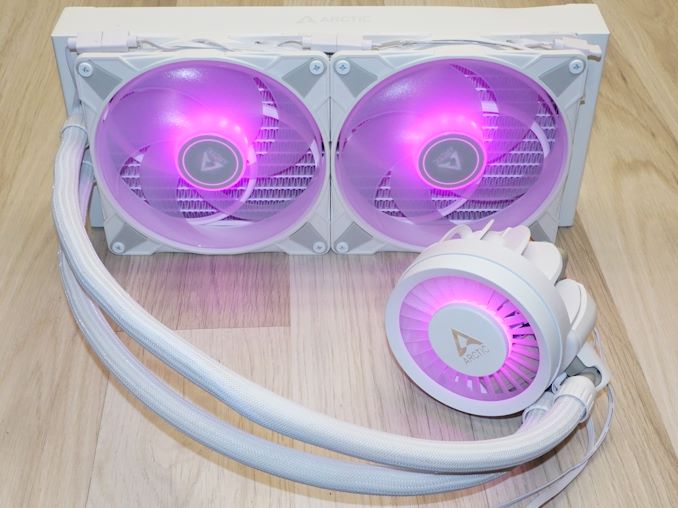
Original Link: https://www.anandtech.com/show/21293/the-arctic-liquid-freezer-iii-280-argb-white-aio-review
The Arctic Liquid Freezer III 280 A-RGB White AIO Review: Refined Design Brings Stand-Out Cooler
by E. Fylladitakis on March 13, 2024 9:00 AM EST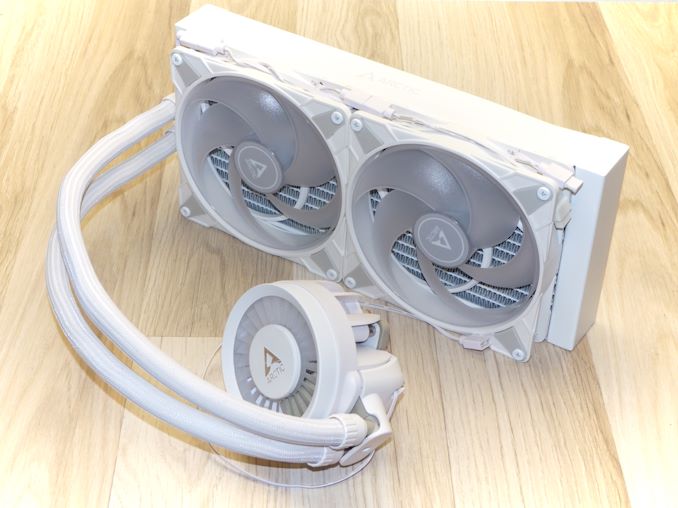
ARCTIC GmbH, originally known as Arctic Cooling, first burst onto the PC cooling scene in 2001 and has since maintained its stature as a leader in cooling technologies. The company made its mark with top-notch thermal compounds and has since kept its focus on cooling solutions while also expanding into other tech accessories, including advanced monitor mounts and audio products.
With the introduction of the Liquid Freezer III series, ARCTIC has taken another significant step forward in the cooling market. This new lineup builds upon the success of the previous Liquid Freezer II series, the great price-to-performance ratio of which made it a highly popular product. Today, we're delving into ARCTIC's latest offerings with the Liquid Freezer III series and, specifically, the 280 A-RGB White model. We'll assess the features, quality, and thermal performance of the AIO (All-In-One) cooler of the series ARCTIC is hoping to dominate the bulk of the mainstream market with.
| ARCTIC Liquid Freezer III 280 mm A-RGB White AIO CPU (ACFRE00151A) Cooler Specifications |
|||
| Type | All-in-One Liquid Cooler | ||
| Dimensions | 317 x 138 x 63 mm (radiator with fan) 42 x 42 mm (coldplate) |
||
| Fans | 2 x 140 mm P14 PST FDB Bearing Fans 1900 RPM (max) |
||
| RGB | Yes (ARGB) | ||
| Supported Sockets | Intel: LGA1700 / LGA1851 AMD: AM5 / AM4 |
||
| Warranty | 6 Years | ||
| Price | $99 (under promo) | ||
Packaging & Bundle
We received the Liquid Freezer III in a typical cardboard box, with custom inserts protecting the cooler during shipping. The artwork on the box is very clean and sophisticated, with a white/black schematic theme. Basic information regarding the cooler and its features can be found on the sides and rear of the box, however, there is a QR code that leads to a very comprehensive digital manual.
ARCTIC kept the bundle as frugal as possible, but they included all of the essentials. Aside from the basic hardware required to mount the cooler, the company provides a unique contact frame for socket LGA1700/LGA1851 processors, a small syringe of MX-6 premium thermal compound that should be enough for a couple of installations, and two different power connectors. One of the connectors allows the precise control of the pump, VRM fan, and radiator fan when connected to three separate motherboard headers, while the other one connects to a single header and all three mechanisms share the same PWM signal. There is no installation leaflet or manual supplied, users will have to find those online. ARCTIC also does not include a LED driver, meaning that the LEDs cannot be used if the motherboard does not have a header for A-RGB LEDs or a third-party controller is present. Note that the Liquid Freezer III is compatible with only socket LGA1700, LGA1851, AM4, and AM5 processors. ARCTIC has ditched compatibility with older sockets, presumably in favor of a slightly lower retail price.
The ARCTIC Liquid Freezer III 280 A-RGB White AIO Cooler
The Liquid Freezer III series is available in four sizes (240-, 360-, 280-, and 420-mm radiators), with each size available in three colors (Black with no LEDs, Black with A-RGB LEDs, and White with A-RGB LEDs). ARCTIC supplied us with the A-RGB White version of the Liquid Freezer III 280 mm cooler for this review.
At first glance, the Liquid Freezer III 280 mm cooler bears a resemblance to most other AIO coolers available, with a standard configuration of a single radiator, two hoses, and a main block that combines the CPU contact plate and the liquid pump. However, the major differences between it and the bulk of the available coolers quickly become apparent. First and foremost, everything about the cooler is white and there are virtually no loose cables, making the design exceptionally neat and visually appealing. ARCTIC’s engineers passed the fan wires from the inside of the tubing’s sleeving, a clever tactic that we first encountered on our recent look on Corsair’s iCUE LINK H150i RGB AIO cooler. The difference here is that, unlike Corsair, ARCTIC kept the standard power and LED connectors, which does make the fan cables visible around their frame, but also allows the users to replace these fans with anything available in the market should they wish to.
The radiator is perhaps the highlight of the Liquid Freezer III coolers, with ARCTIC opting for a 38 mm thick radiator. This could be the source of compatibility woes, especially with older and/or smaller cases, as the completed cooler requires a clearance of at least 65 mm to be installed, but also increases the heat exchange surface area greatly.
In terms of design, the radiator adheres to the standard dual pass cross-flow configuration, featuring tiny fins soldered onto thin oblong tubes, a common design trait shared by the majority of AIO cooler radiators. A very close look at the fins reveals that they are serrated, a tactic that sacrifices heat exchange area in favor of airflow dynamics and typically works well with larger radiators. Regardless of the serrated fins, ARCTIC is employing their P-series fans, which are high pressure designs that employ very few and wide blades. The company logo is subtly etched across the sides of the radiator.
The main block assembly of the Liquid Freezer III coolers is significantly different than that of most other designs. It is significantly larger than most and not because of an oversized pump or large contact area, but because it includes a small fan for cooling the VRM heatsinks around the CPU socket. Note that the fan is not the tiny blades seen at the top of the block - these are ornamental only - but a narrow and tall plastic impeller hidden underneath it.
The top half of the block that hosts the VRM fan and the RGB LEDs is magnetically attached and can be removed effortlessly by simply pulling it off. This reveals the basic electronics of the block, allowing the insertion of the power cable to the right. Note that the power cable needs to be routed from underneath the plastic cover, from where the LED cable exits the block as well, otherwise the top cover will not fit. We can see that almost the entirety of the block, with the sole exception being the copper contact plate and metallic retention parts, is made of plastic. This includes even the fittings of the coolant hoses.
A very small copper contact plate can be found at the bottom of the cooler, held in place with four screws. The surface of the plate is very well polished and perfectly flat, ensuring great contact with the processor’s shim. The contact area is very small, barely over 40 by 40 mm.
The RGB lighting application on the Liquid Freezer III is good. LEDs are installed in the hubs of the fans, lighting their opaque blades. ARCTIC is using the same opaque material for the faux blades at the top of the CPU block cover, trying to mimic the same lighting effect. The issue here is that the faux blades, unlike the real blades of the fans, do not spin when the cooler is powered. The final outcome is not the best that could be but is aesthetically pleasing.
Testing Methodology
Although the testing of a cooler appears to be a simple task, that could not be much further from the truth. Proper thermal testing cannot be performed with a cooler mounted on a single chip, for multiple reasons. Some of these reasons include the instability of the thermal load and the inability to fully control and or monitor it, as well as the inaccuracy of the chip-integrated sensors. It is also impossible to compare results taken on different chips, let alone entirely different systems, which is a great problem when testing computer coolers, as the hardware changes every several months. Finally, testing a cooler on a typical system prevents the tester from assessing the most vital characteristic of a cooler, its absolute thermal resistance.
The absolute thermal resistance defines the absolute performance of a heatsink by indicating the temperature rise per unit of power, in our case in degrees Celsius per Watt (°C/W). In layman's terms, if the thermal resistance of a heatsink is known, the user can assess the highest possible temperature rise of a chip over ambient by simply multiplying the maximum thermal design power (TDP) rating of the chip with it. Extracting the absolute thermal resistance of a cooler however is no simple task, as the load has to be perfectly even, steady and variable, as the thermal resistance also varies depending on the magnitude of the thermal load. Therefore, even if it would be possible to assess the thermal resistance of a cooler while it is mounted on a working chip, it would not suffice, as a large change of the thermal load can yield much different results.
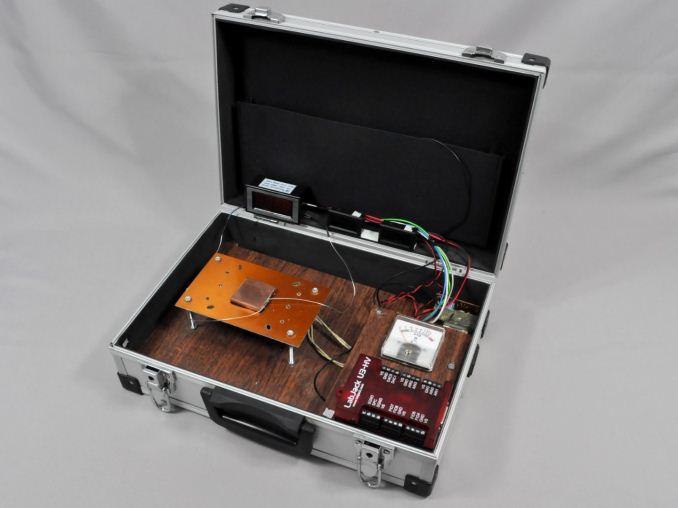
Appropriate thermal testing requires the creation of a proper testing station and the use of laboratory-grade equipment. Therefore, we created a thermal testing platform with a fully controllable thermal energy source that may be used to test any kind of cooler, regardless of its design and or compatibility. The thermal cartridge inside the core of our testing station can have its power adjusted between 60 W and 340 W, in 2 W increments (and it never throttles). Furthermore, monitoring and logging of the testing process via software minimizes the possibility of human errors during testing. A multifunction data acquisition module (DAQ) is responsible for the automatic or the manual control of the testing equipment, the acquisition of the ambient and the in-core temperatures via PT100 sensors, the logging of the test results and the mathematical extraction of performance figures.
Finally, as noise measurements are a bit tricky, their measurement is being performed manually. Fans can have significant variations in speed from their rated values, thus their actual speed during the thermal testing is being recorded via a laser tachometer. The fans (and pumps, when applicable) are being powered via an adjustable, fanless desktop DC power supply and noise measurements are being taken 1 meter away from the cooler, in a straight line ahead from its fan engine. At this point we should also note that the Decibel scale is logarithmic, which means that roughly every 3 dB(A) the sound pressure doubles. Therefore, the difference of sound pressure between 30 dB(A) and 60 dB(A) is not "twice as much" but nearly a thousand times greater. The table below should help you cross-reference our test results with real-life situations.
The noise floor of our recording equipment is 30.2-30.4 dB(A), which represents a medium-sized room without any active noise sources. All of our acoustic testing takes place during night hours, minimizing the possibility of external disruptions.
| <35dB(A) | Virtually inaudible |
| 35-38dB(A) | Very quiet (whisper-slight humming) |
| 38-40dB(A) | Quiet (relatively comfortable - humming) |
| 40-44dB(A) | Normal (humming noise, above comfortable for a large % of users) |
| 44-47dB(A)* | Loud* (strong aerodynamic noise) |
| 47-50dB(A) | Very loud (strong whining noise) |
| 50-54dB(A) | Extremely loud (painfully distracting for the vast majority of users) |
| >54dB(A) | Intolerable for home/office use, special applications only. |
*noise levels above this are not suggested for daily use
Testing Results, Maximum Fan Speed
Our maximum speed testing is performed with both the fans and the pump of the kit powered via a 12V DC source. This input voltage should have the pump and fans matching the speed ratings of the manufacturer. According to ARCTIC’s P14 PST fan specifications, the fans should have a maximum rotational speed of 1900 RPM. Our tachometer indicated that the fans were rotating at an average speed of exactly 1880 RPM, very close to their rated specifications.

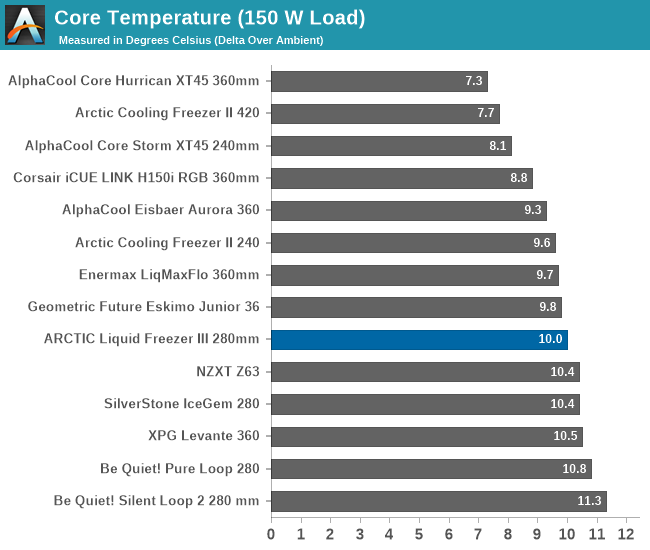
| Core Temperature, Constant Thermal Load (Max Fan Speed) |
The ARCTIC Liquid Freezer III 280 mm has an average thermal resistance of 0.075 °C/W with its fans running at maximum speed, outperforming most similarly sized offerings in terms of raw thermal performance, especially older products. Although its raw thermal performance seems to be barely matching that of the older and smaller Liquid Freezer II 240 mm model, the Liquid Freezer III is significantly quieter under the same operating conditions.
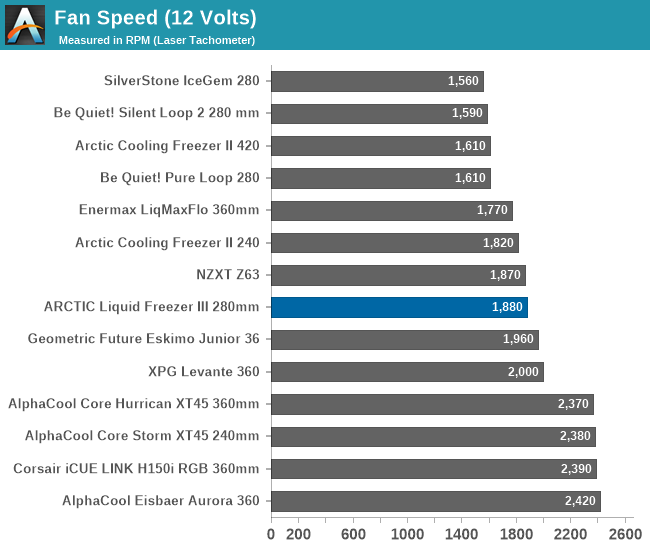
The Sound Pressure Level (SPL) of the ARCTIC Liquid Freezer III 280 mm with all of its components running at maximum speed is 40.4 dB(A), which is a good figure, yet it could have been better. Having a dedicated VRM fan plays a role here, as it contributes to the overall SPL level of the entire setup.
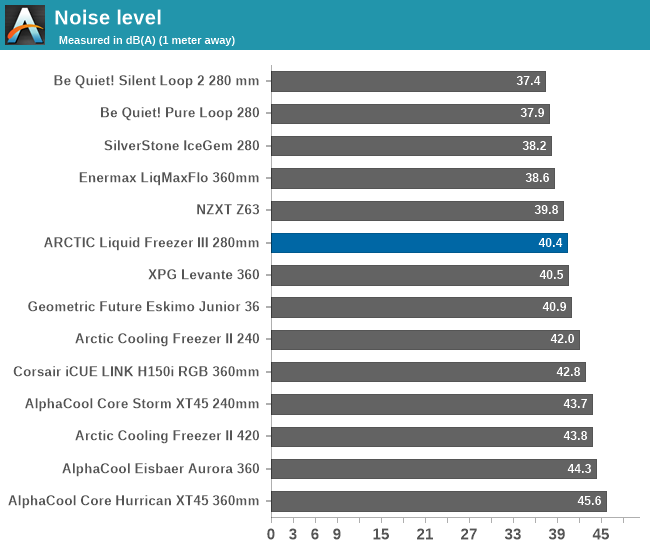
Testing Results, Low Fan Speed
Using a PWM voltage regulator, we reduced the speed of the fans manually down to half their rated speed. At this setting, the 140 mm fans of the Liquid Freezer III 280 mm rotate at 950 RPM. Note that this also affects the speed of the pump and VRM fan as well.
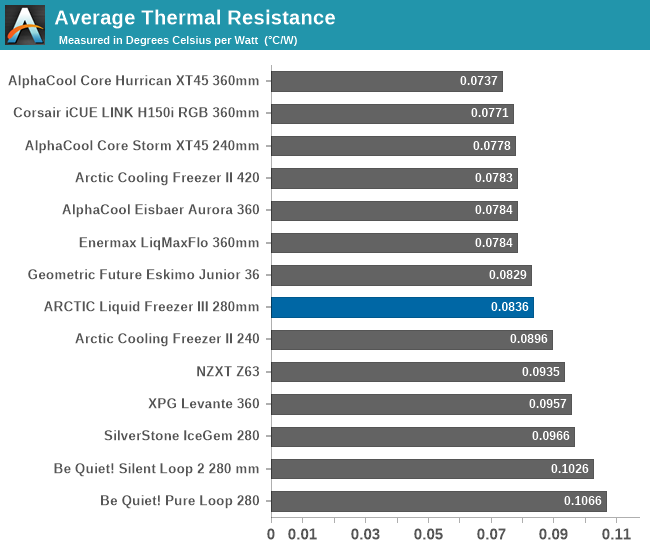
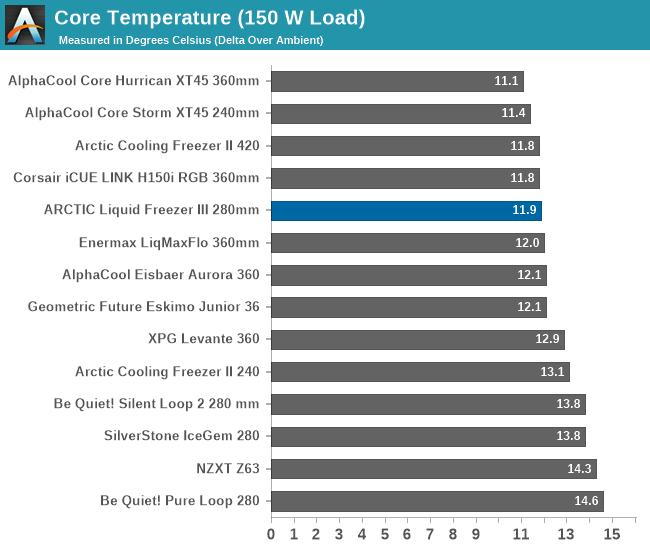
| Core Temperature, Constant Thermal Load (Low Fan Speed) |
The high mass of the radiator gives the Liquid Freezer III 280 mm a strong advantage here, with its average thermal resistance rising to just 0.0836 °C/W. Its thermal resistance is fairly stable regardless of the load, suggesting a good thermal transfer design, despite its small contact plate. This places ARCTIC’s latest 280 mm cooler in direct competition with 360 mm AIO coolers and even close to the 420 mm version of the Liquid Freezer II, which used to perform a little better but at a much higher noise level.
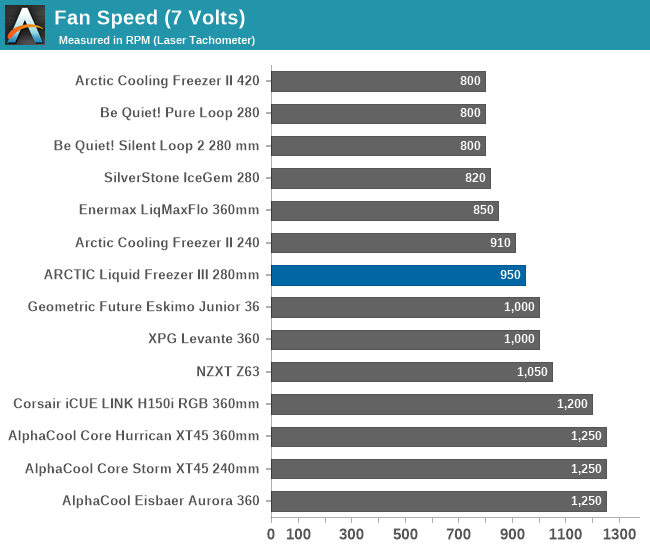
With the fans at half speed, the noise levels drop to 33.1 dB(A), a figure that may not be as low as that of other similarly sized products that were engineered toward quiet operation, yet it is perfectly comfortable for even the most sensitive of ears. Under typical conditions, it should be nearly impossible for a user to discern the sound coming from the Liquid Freezer III 280 mm.

Thermal Resistance VS Sound Pressure Level
During our thermal resistance vs. sound pressure level test, we maintain a steady 100W thermal load and assess the overall performance of the coolers by taking multiple temperature and sound pressure level readings within the operating range of the stock cooling fans. The result is a graph that depicts the absolute thermal resistance of the cooler in comparison to the noise generated. For both the sound pressure level and absolute thermal resistance readings, lower figures are better.
This chart is highly revealing regarding the overall performance of the Liquid Freezer III 280 mm, with the cooler having one of the smallest inclinations we have ever seen. What that translates to is that the thermal performance of the Liquid Freezer III 280 mm is only slightly affected by the speed of the cooling fans. At first sight, this would suggest that the size of the heat exchange area is disproportionally low compared to the cooler’s capability to transfer thermal energy from the CPU to the radiator – however, manipulating the speed of the fans also affects the speed of the pump, which should play a significant role to the rate of transfer between the block and the radiator. From the above, we can only surmise that the contact plate is what limits the overall performance of the Liquid Freezer III 280 mm, which does perform very well under typical conditions but has little-to-no room for further improvement.
Conclusion
In a densely populated market of cooling options, ARCTIC's Liquid Freezer III 280 A-RGB White AIO cooler manages to stand out, highlighting the company's persistence on releasing ever more competitive products. ARCTIC's A-RGB White AIO model focuses on a blend of high performance and visual elegance with its A-RGB features and all-white appearance, suitable for users who prioritize both efficiency and aesthetics in their setup.
A key feature of the Liquid Freezer III is its seamless aesthetic appeal, particularly in the A-RGB White version, which offers a visually stunning setup without the clutter of excessive cables. The Liquid Freezer III 280 A-RGB White also features a 38mm thick radiator that improves its heat dissipation capabilities, although its size might pose compatibility considerations for some cases. Nonetheless, this design choice significantly increases the heat exchange area, promoting superior cooling performance. Its fans and main block are designed for optimal airflow and cooling efficiency, with the added benefit of a small fan for VRM heatsink cooling – a thoughtful inclusion not commonly found in AIO coolers.
The ARCTIC Liquid Freezer III 280 mm cooler exhibits commendable performance under standard operational condition - however, adjustments to fan speeds result in a minimal impact on its cooling efficiency. This phenomenon suggests a disconnect between the size of the heat exchange area and the cooler's capability to transfer thermal energy from the CPU to the radiator – that the two parts have been disproportionally sized in capacity. Notably, the primary limitation appears to be the contact plate, indicating that while the cooler performs adequately within its designed parameters, it possesses limited potential for further enhancement. Consequently, for users accustomed to having access to a range of thermal performance levels through fan speed adjustments and/or upgrades, the Liquid Freezer III 280 mm may not meet their expectations. It is very a solid performer – there's no doubt about that – but the design is playing close to the edge of its potential right out of the box.
Perhaps the strongest competitive point of the Liquid Freezer III 280 mm cooler, and that of the entire series, is its comparatively low retail price, especially with the prices ARCTIC announced with the release of the series. In celebration of 23 years of ARCTIC's presence in the cooling industry, a special 23% discount is available until the 20th of May, making the Liquid Freezer III an even more attractive option for consumers looking for a solid AIO cooling solution without breaking the bank. ARCTIC managed to lower their build costs so much mainly through the strategic use of materials and the minimization of the product’s packaging and bundled items. Among other things, ARCTIC has passed on including a printed manual or RGB driver with the kit, which reduces the production cost of the coolers a little bit as well. Overall, while the extensive use of plastic might raise questions about quality for some, ARCTIC addresses these concerns head-on with a generous 6-year warranty, offering peace-of-mind for consumers.
In conclusion, the ARCTIC Liquid Freezer III 280 A-RGB White AIO cooler not only offers competitive cooling efficiency and a striking visual design but also represents a smart investment with its current promotional pricing of $99. Its thoughtful design and the inclusion the small VRM cooling fan, sets it apart in the crowded cooling market. For those seeking a blend of aesthetics, performance, and value, the Liquid Freezer III emerges as a compelling choice.

